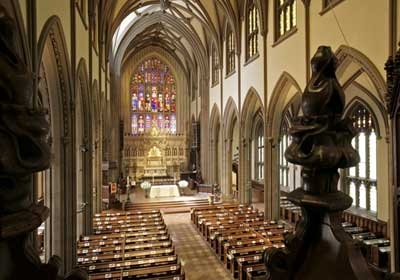Installations: A Higher Power Page 2

Replacing the instrument wouldn't have been easy, since organs on this scale cost $3 to $5 million. More important, a new organ would have taken years to commission and build.
Trinity's organist and director of music, Dr. Owen Burdick, needed something much sooner - but not just any organ would do. In his research, Dr. Burdick discovered Marshall & Ogletree and learned that it was working on a "virtual" pipe organ that would be nothing short of revolutionary.
When he went to Boston to hear the prototype system, he was impressed. "It was incredible - unlike any other digital organ I'd ever experienced," Dr. Burdick told me. "I knew the first time I played the prototype, I wanted Trinity Church to be the first to have this technology."
Whereas a traditional organ generates sound by passing air through pipes of different lengths and tunings, a digital organ reproduces a pipe organ's sound through recordings of notes taken from pipe organs. "The Marshall & Ogletree organ represents a departure from traditional digital-organ design because our focus is solely on how perfect we can make the results," said David Ogletree.
Trinity's new organ would be built from the ground up with the best materials and with the ultimate in sound reproduction in mind, regardless of the cost. The result is called Opus 1, The Epiphany, and it was installed in time for a 9/11 memorial in 2003. The organ is a technological marvel - easily the most ambitious digital organ currently in use anywhere. It runs on the Linux operating system and has 11 computers dedicated to tone generation and three handling the console controls.
- Log in or register to post comments




















































